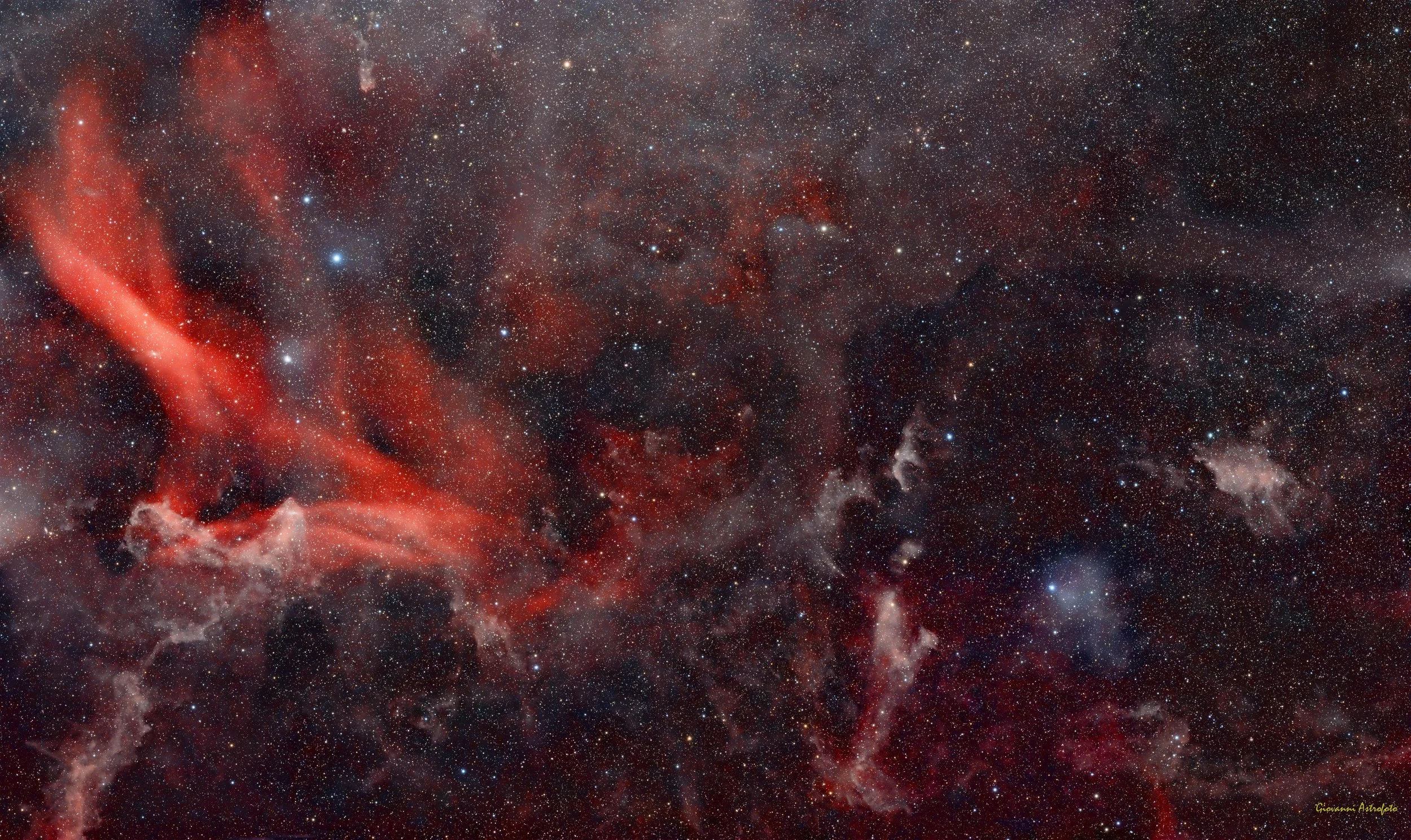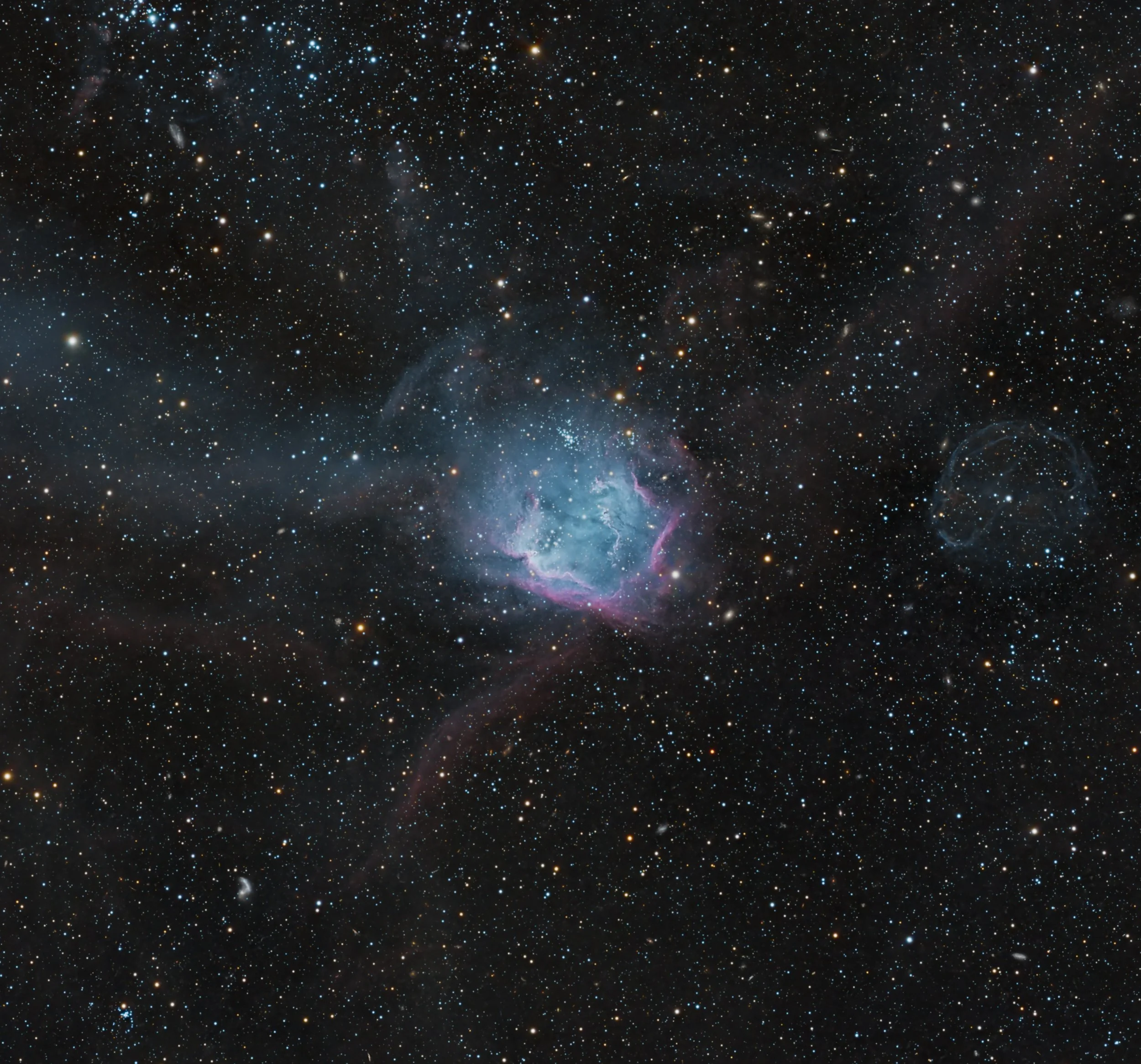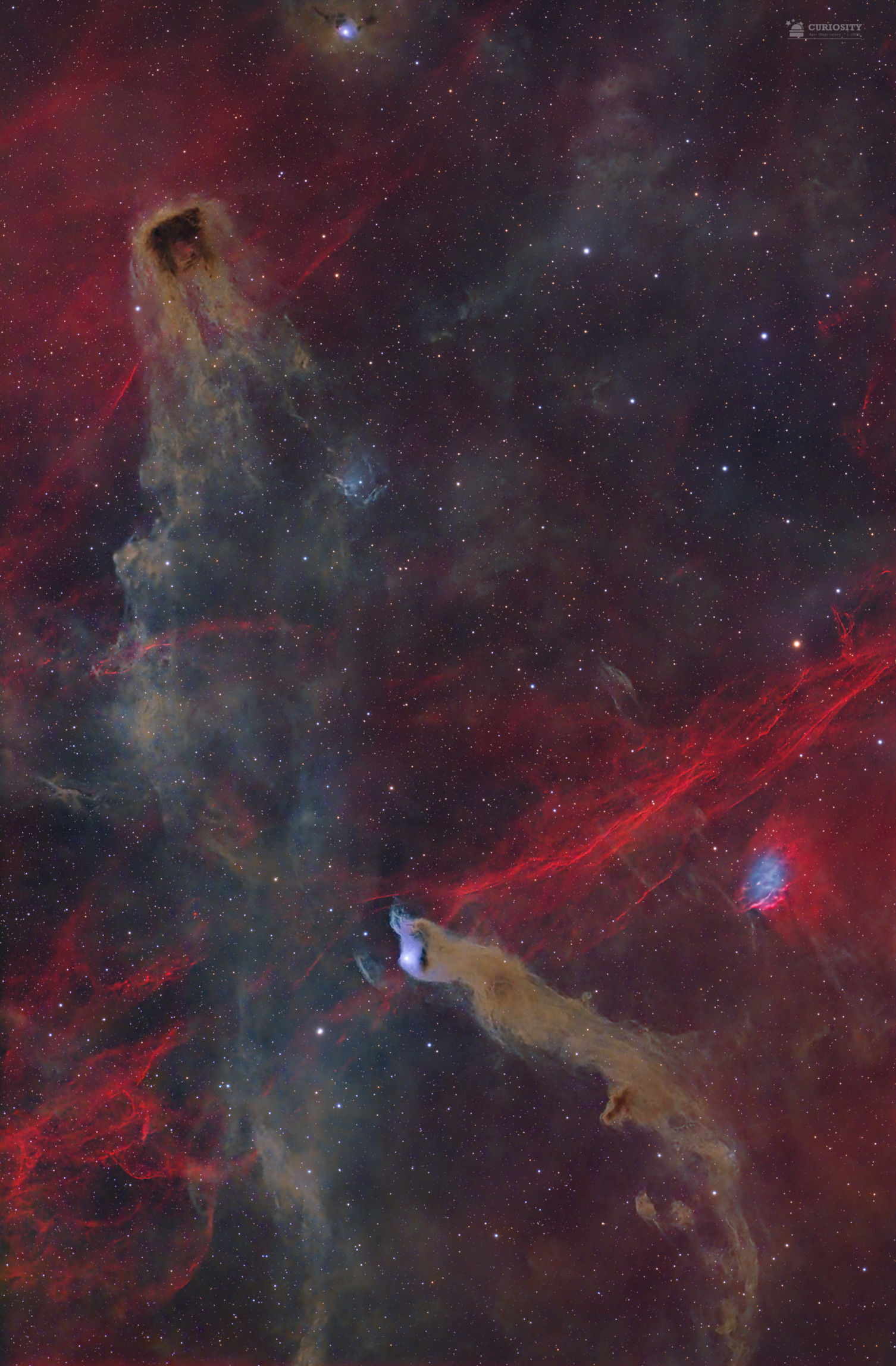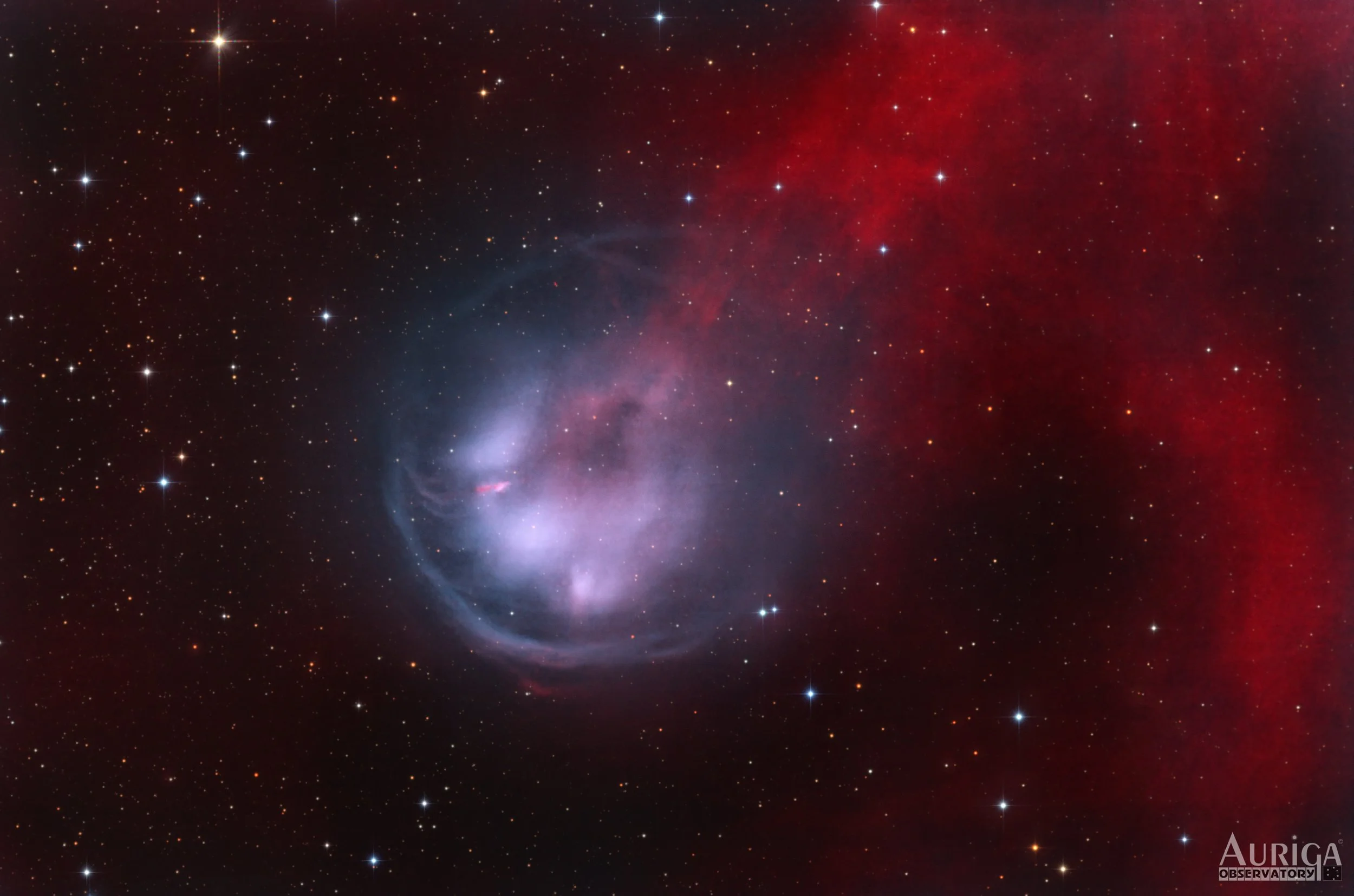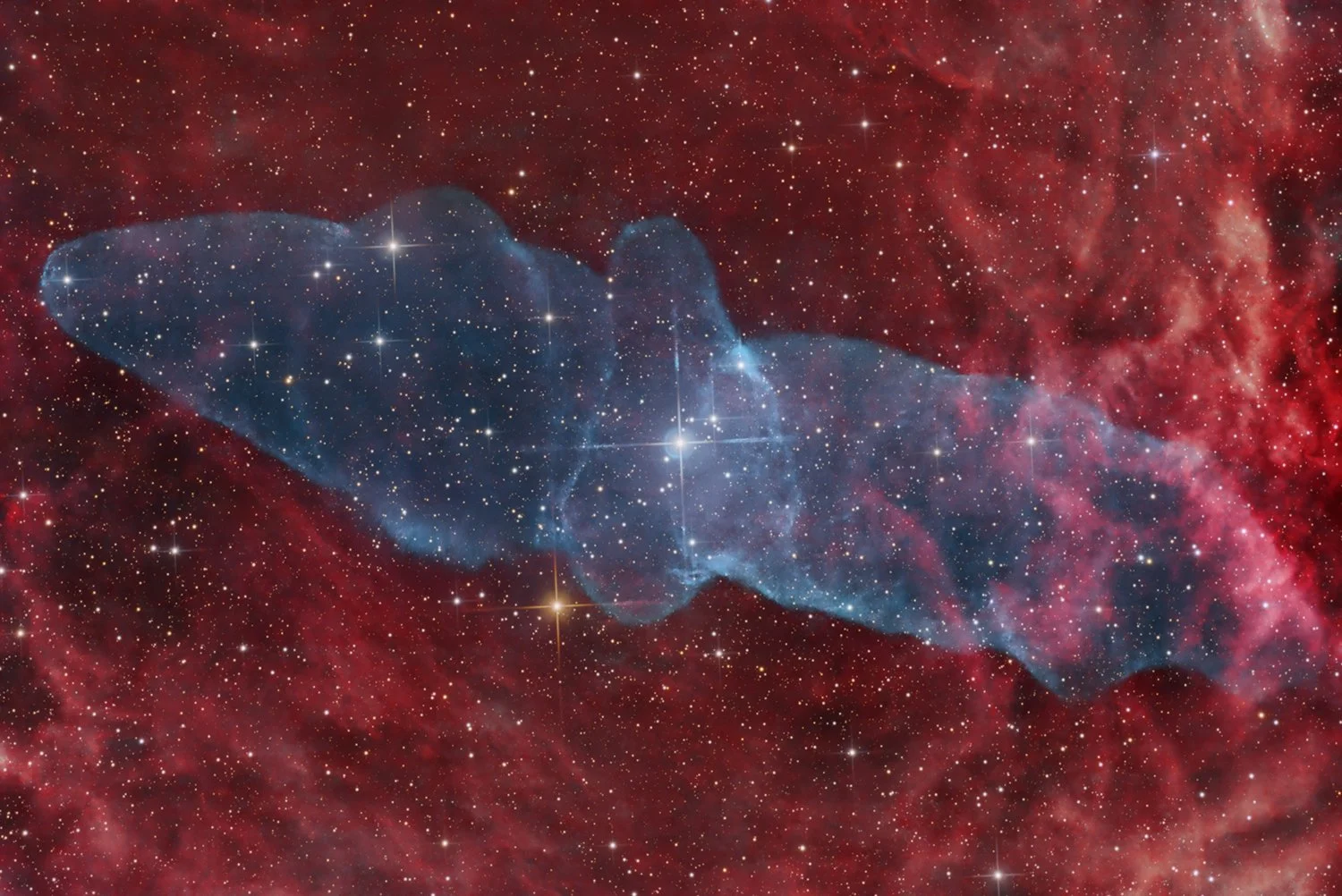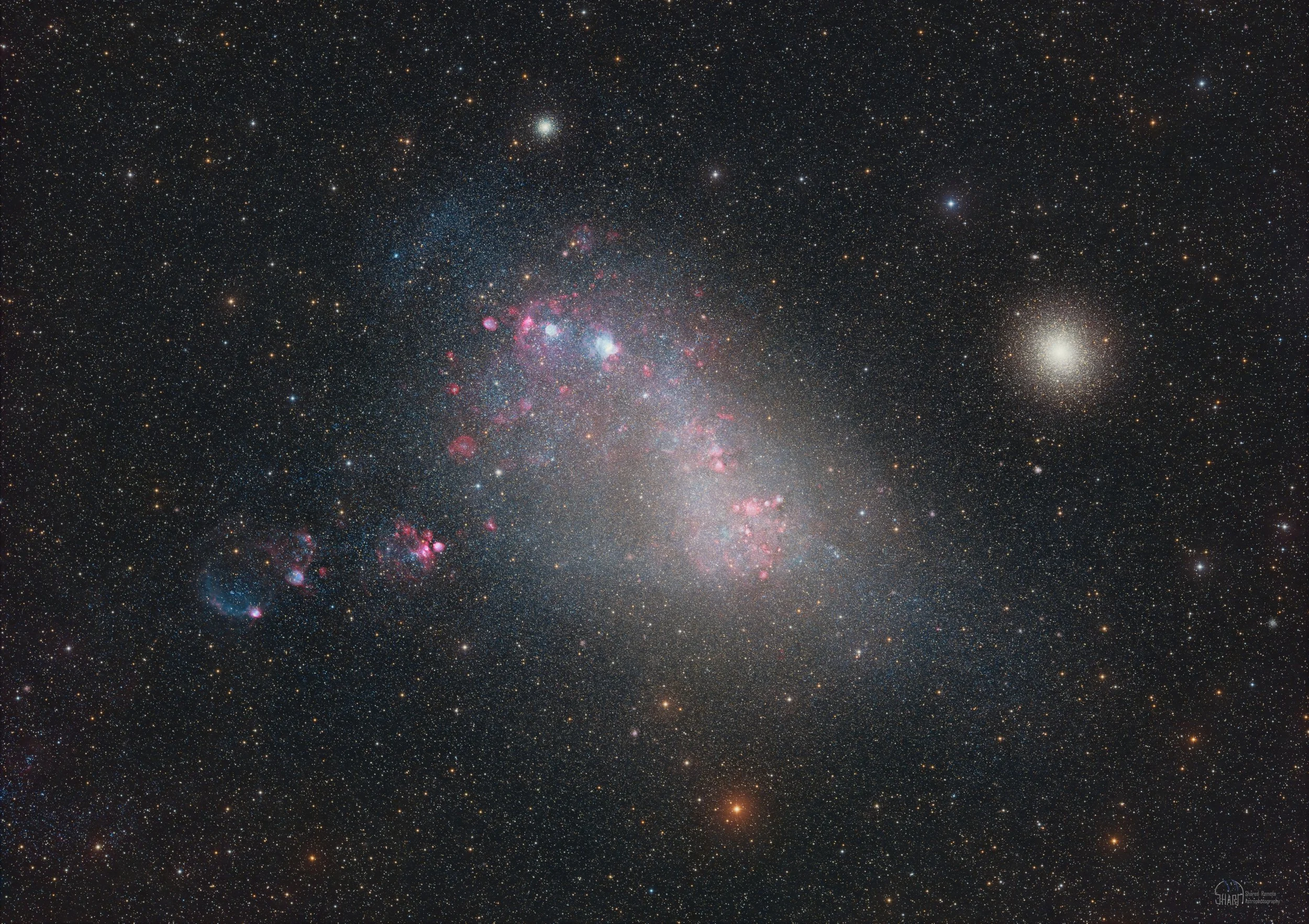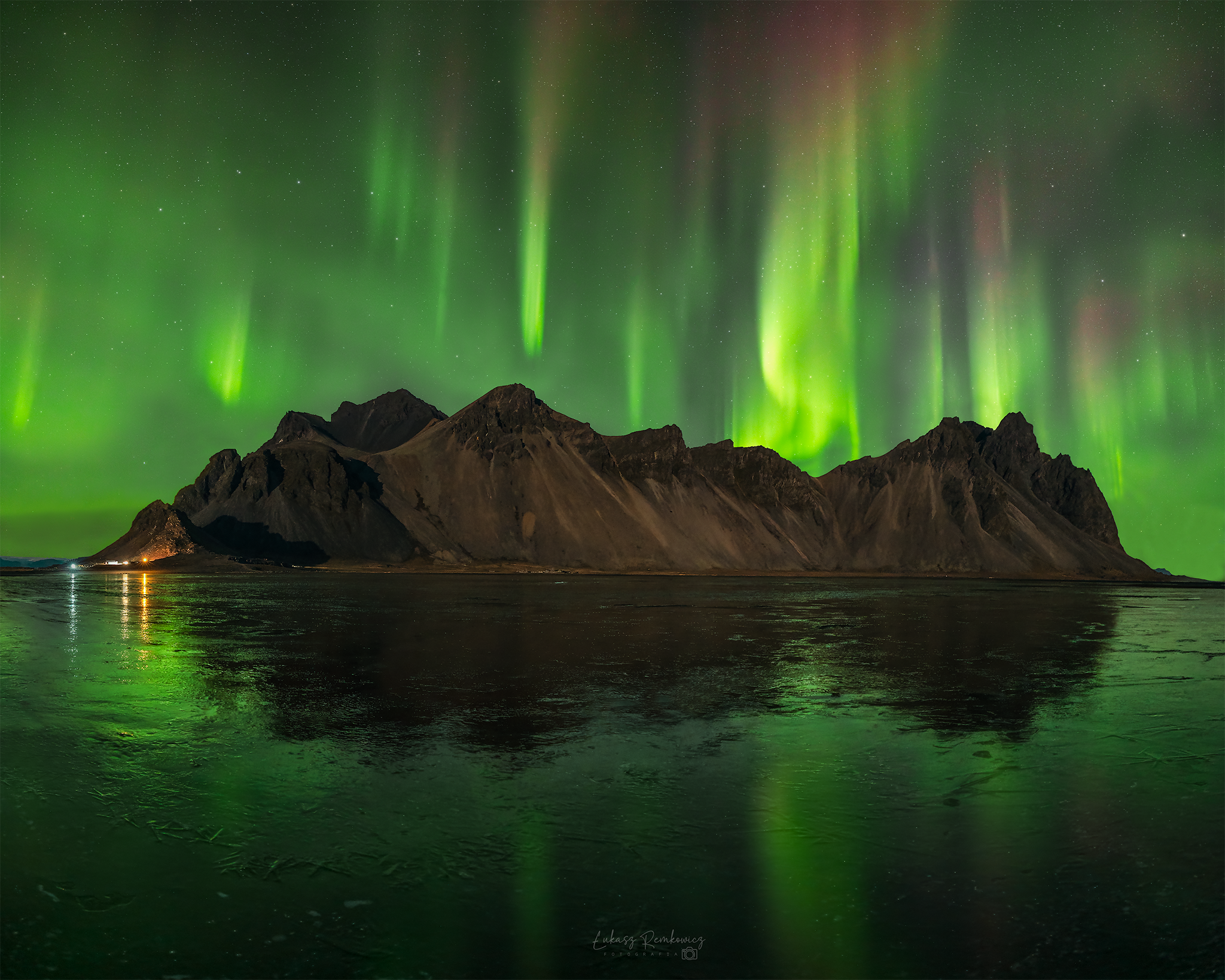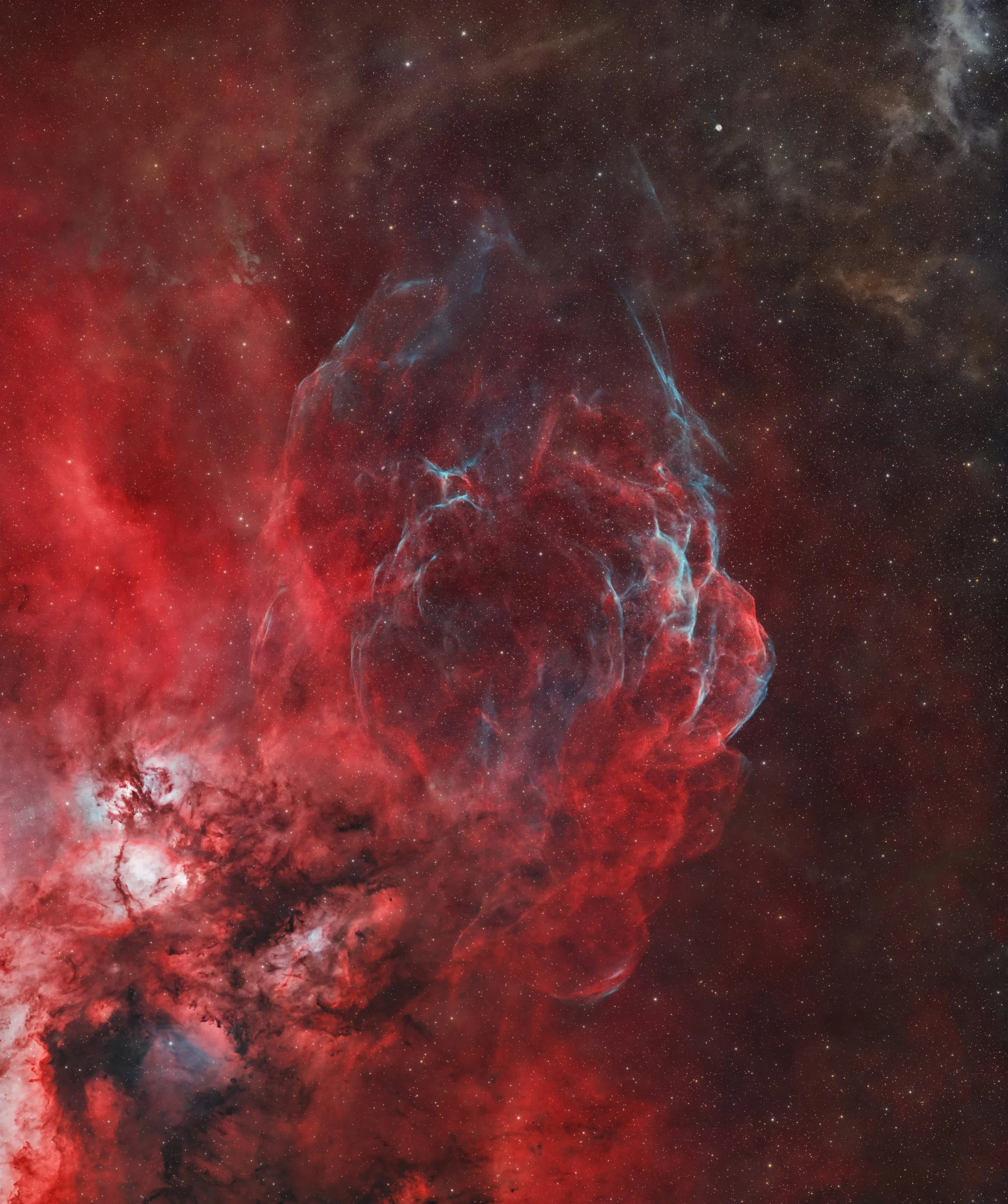
AAPOD2 Image Archives
November 2024
Monthly AAPOD2 Winners
Mosaic of a part or Lacerta constellation
This mosaic reveals a stunning portion of the constellation Lacerta, the "Lizard," in unprecedented detail. Composed of 2,000 individual frames, each exposed for 300 seconds, this masterpiece represents over 187 hours of imaging effort. The ambitious project began in August 2024, culminating in a breathtaking view that showcases the intricate structures hidden in this often-overlooked region of the sky.
Lacerta lies along the Milky Way's path, offering a rich field of stars, faint nebulae, and interstellar dust. Within this mosaic, subtle hydrogen-alpha emissions thread through the star-studded background, hinting at vast molecular clouds and star-forming regions. The meticulous planning and stitching together of such an expansive image highlight the depth of dedication and artistry in astrophotography.
Despite its relatively small size, Lacerta is home to fascinating celestial objects, including open star clusters and dark nebulae. This mosaic celebrates the quiet beauty of the constellation, revealing features that are often too faint to see in smaller fields of view.
The immense time and effort poured into capturing this mosaic reflect not just a passion for the stars but also the unyielding curiosity that drives exploration of the cosmos. A true testament to the art of long-term astrophotography.
The Space Waterfall (vdB14 and vdB15) in HaLRGB
Captured under the pristine Bortle 3 skies of Northern Spain, this striking image showcases the stunning vdB 14 and vdB 15, an enchanting reflection nebula pair often referred to as the Space Waterfall. The nebulae reside in the constellation Camelopardalis, a lesser-known yet fascinating region of the northern sky, located approximately 900 light-years away from Earth.
vdB 14 and vdB 15 are illuminated by nearby stars, which lend them their bluish hue. These stars reflect light off the surrounding interstellar dust, creating the glowing veils seen in this image. The nebulae are part of a vast molecular cloud complex that also contains darker patches of cosmic dust, seen as silhouetted regions against the surrounding star field.
This wide-field image combines data from hydrogen-alpha (Ha) and LRGB channels, expertly processed to bring out the rich interplay of light and shadow. The Ha signal highlights faint hydrogen emissions within the nebulosity, adding depth and contrast to the scene. The "waterfall" effect arises from the structured filaments of dust and gas, cascading through the field of view and giving the nebula its poetic nickname.
Located in a remote observatory in Northern Spain, this region's dark and stable skies provide the perfect setting for capturing such faint and intricate cosmic features. The image captures not only the beauty of vdB 14 and vdB 15 but also the elegance of the wider cosmic canvas, with a wealth of faint stars and distant galaxies completing the scene. A reminder of the endless wonders waiting to be explored in the quieter corners of our galaxy.
Andromeda Galaxy (M31)
This image of the Andromeda Galaxy (M31) was captured from Rudka Wieś, located in the Masuria region of Poland, on August 29th and 30th, 2024. Known as one of the most iconic and closest spiral galaxies to our own Milky Way, Andromeda lies about 2.5 million light-years away. The image showcases the grandeur of M31, with its sweeping spiral arms and bright, dense core, highlighting the beauty of a galaxy that is on a collision course with the Milky Way in several billion years.
The process behind this image is a two-night effort, with RGB data being collected on the first night. A total of 100 frames were taken, each lasting 180 seconds, to capture the galaxy's visible light in red, green, and blue wavelengths. The second night focused on capturing the hydrogen signal from the galaxy’s interstellar medium, utilizing an L-Ultimate filter. This filter allowed for a clearer image of the emission nebulae within the galaxy, highlighting regions of star formation in its spiral arms. For this, 20 frames, each 600 seconds long, were acquired.
Taken under relatively dark skies in Rudka Wieś, a location that offers a good balance of dark-sky conditions, this image beautifully showcases the Andromeda Galaxy, not only in its full grandeur but also in the intricate details of its star-forming regions, making this capture a testament to both the beauty of the cosmos and the power of modern amateur astrophotography.
CTA 1
This fascinating image captures CTA 1, a vast and faint supernova remnant in the constellation Cepheus. Thought to have been formed by a supernova explosion around 10,000 years ago, CTA 1 spans a wide region approximately 4,600 light-years from Earth. This supernova remnant is an elusive target for astrophotographers due to its dim luminosity and diffuse structure, making it a remarkable sight when imaged in such detail.
The designation "CTA 1" comes from the California Institute of Technology's (Caltech) first radio source catalog, published in 1960. While often collectively referred to as G119.5+10.2, this expansive remnant also includes substructures cataloged as G119.5+9.8 and G119.5+10.0, highlighting its complex morphology.
Adding a striking contrast to the ethereal backdrop of CTA 1 is the planetary nebula NGC 40, prominently visible near the center-right of the image. Often nicknamed the Bowtie Nebula, this bipolar planetary nebula glows brightly as the central dying star sheds its outer layers, creating a stunning interplay of structure and color.
This image showcases the celestial interplay of endings and beginnings: the diffuse remains of a supernova explosion, which seeded the cosmos with elements for future star formation, juxtaposed with the beautiful remnants of a star nearing the end of its life. It’s a rare and mesmerizing look at Cepheus' hidden treasures.
NGC 602
NGC 602 is a striking open cluster nestled within the Small Magellanic Cloud (SMC), a satellite galaxy of the Milky Way located some 200,000 light-years away. This vibrant cluster, surrounded by the emission nebula N90, is illuminated by young, massive stars that have recently formed within the dense clouds of gas and dust. The intense ultraviolet radiation from these hot stars sculpts and ionizes the surrounding material, creating a dynamic, glowing environment rich with cosmic activity.
There is what appears to be a faint planetary nebula, possibly identified as SMC-B Bru 2-165, nestled within this stellar nursery. Planetary nebulae represent the final stages in the life cycle of medium-sized stars, where the outer layers are ejected, leaving a hot, dense core.
The SMC itself offers a unique window into stellar evolution, given its low metallicity and proximity. Capturing such delicate and rare features in this image highlights the interplay of star formation, destruction, and the rich tapestry of phenomena present within this neighboring galaxy.
A deep view into the "Ghost of Cassiopeia"
Deep in the constellation Cassiopeia, a spectral figure haunts the night sky: the aptly named Ghost of Cassiopeia. This striking nebula, cataloged as IC 63, is located about 550 light-years away, in the cosmic backyard of the bright star Gamma Cassiopeiae.
The Ghost's ethereal glow is the result of radiation from Gamma Cassiopeiae, an unstable B-class star that shines thousands of times brighter than the Sun. This radiation energizes the surrounding hydrogen gas, causing it to fluoresce in a reddish hue typical of H-alpha emissions. Meanwhile, the nebula's bluish wisps are created by interstellar dust reflecting Gamma Cassiopeiae's intense starlight, giving it a haunting, ghost-like appearance.
IC 63 is a reflection-emission nebula, where both processes—light reflection and gas ionization—occur in tandem. Its structure is shaped by stellar winds and radiation pressure, carving out delicate tendrils and intricate layers in the interstellar medium.
This nebula is not merely a visual delight but also a dynamic region, where the effects of stellar radiation sculpt the surrounding environment. While its ghostly appearance makes IC 63 a popular astrophotography target, its proximity and interaction with Gamma Cassiopeiae offer astronomers insights into the interplay between massive stars and their surrounding gas clouds.
Under dark skies and with the right equipment, the Ghost of Cassiopeia can be revealed in all its spectral glory, a haunting reminder of the transient beauty of the cosmos.
NGC 7094 and its new feature
This wide-field view reveals an extraordinary blend of cosmic objects, each contributing to the visual and scientific richness of the image.
M15, one of the densest globular clusters in the Milky Way, glitters with the light of hundreds of thousands of stars tightly packed into a spherical shape. Located about 33,000 light-years away, its dense core may harbor a rare intermediate-mass black hole, making it a subject of ongoing research.
NGC 7094, a planetary nebula, is a stellar remnant left behind by a Sun-like star nearing the end of its life. Its central white dwarf illuminates the nebula with ultraviolet radiation, sculpting the surrounding gases into intricate shapes.
The [O III] Zone, an unexpected discovery in this image, spans a large region and glows with a faint greenish-blue hue, characteristic of doubly ionized oxygen. The nature of this halo is a mystery—potentially a remnant of ancient stellar outflows or interstellar shockwaves.
Adding to the beauty, the image is interlaced with crimson hydrogen-alpha emissions and cosmic dust clouds, which create a vivid backdrop. These elements highlight the interplay of old and new: ancient star clusters, dying stars, and the raw materials for future stellar generations.
This image serves as a testament to the power of wide-field astrophotography, revealing not only familiar objects but also uncovering hidden phenomena awaiting deeper exploration. It’s a reminder that even well-known regions of the sky still hold secrets to be discovered.
The Wolf's Cave and the Toast Nebula
This remarkable region in the constellation Cepheus showcases a tapestry of astrophysical phenomena, where stars and interstellar matter come together to create a scene of cosmic artistry. Each of these designations represents distinct features within a vast complex of gas and dust, woven into the fabric of our galaxy.
VdB 152, also known as Ced 201, is a faint reflection nebula perched at the tip of an elongated dark nebula. It gleams with a ghostly blue hue as it reflects the light from nearby stars, offering a stark contrast to the surrounding inky darkness.
LDN 1221 is part of a dense dark nebula obscuring background starlight, forming intricate, sinuous shapes that add depth and mystery to the region.
LBN 534 and LBN 538 are large, faint emission nebulae that provide the backdrop, glowing faintly in hydrogen-alpha emissions, highlighting the presence of ionized gas.
This area is a rich hunting ground for amateur and professional astronomers alike. The interplay of light and shadow reveals the ongoing processes of star formation, with dark filaments of dust punctuated by the glow of emerging stars. The complex structures speak to the dynamic interactions between gravity, stellar winds, and radiation.
Imaged under the pristine skies of a dark-sky location, this celestial mosaic serves as a reminder of the quiet yet awe-inspiring forces that shape the universe. In Cepheus, beauty and complexity converge in an astronomical masterpiece.
HFG1 | PK 136+05 "Breath of the Heavens"
HFG1, also cataloged as PK 136+05, is a planetary nebula located in the constellation Cassiopeia. This peculiar object stands out due to its fascinating interaction with the interstellar medium, resulting in an intricate and extended structure that captivates astronomers and astrophotographers alike.
HFG1 was first cataloged in 1982 by Heckathorn, Fesen, and Gull (hence the name "HFG"). It surrounds the binary system V664 Cas, consisting of a white dwarf and a companion star. The pair’s movement through space at high velocity creates a spectacular bow shock, leaving behind a faint, elongated tail stretching over 1.5 degrees across the sky. This interaction produces a striking visual effect, with the bright planetary nebula at its center trailing a wispy, comet-like wake of gas and dust.
This celestial marvel is a late-stage planetary nebula, where material ejected during the dying star’s red giant phase is illuminated by the remaining hot core. The faint surrounding structures are best observed through narrowband filters, particularly in H-alpha and OIII, revealing its intricate details and contrasting colors.
Squid Nebula Sh2-129
The Squid Nebula, also known as Sh2-129 or Ou4, is one of the most enigmatic and striking deep-sky objects. Located in the constellation Cepheus, this faint emission nebula spans an astonishing three degrees of the sky—roughly six times the diameter of the full moon. It was first discovered in 2011 by French astrophotographer Nicolas Outters.
What makes the Squid Nebula so extraordinary is its ghostly, bipolar shape, which appears embedded within the larger Sh2-129 region, known as the Flying Bat Nebula. The nebula glows predominantly in the OIII wavelength, giving it a bluish hue that contrasts dramatically against the surrounding H-alpha emission of Sh2-129.
Astrophysicists speculate that Ou4 may represent an enormous outflow of material ejected from a triple star system at its center, potentially linked to a massive stellar wind or an ancient supernova event. However, its true origins remain a subject of ongoing study.
Small Magellanic Cloud (NGC 292)
The Small Magellanic Cloud (SMC), cataloged as NGC 292, is a dwarf galaxy located approximately 200,000 light-years away in the constellation Tucana. As one of the closest galactic neighbors to our Milky Way, the SMC serves as a unique laboratory for studying stellar evolution and galactic interactions. Measuring about 7,000 light-years in diameter, this irregular galaxy is home to vibrant star-forming regions, such as NGC 346, and ancient globular clusters like 47 Tucanae that orbit its vicinity.
This image captures the SMC in stunning detail, revealing its scattered clusters, intricate nebulae, and the faint tendrils of gas and dust that bridge the SMC to its larger companion, the Large Magellanic Cloud, via the Magellanic Bridge. From the Southern Hemisphere, particularly in pristine locations like the Atacama Desert or rural Australia, the SMC is visible to the naked eye as a faint, cloudy patch in the night sky.
The galaxy’s irregular structure and its role as a gravitational partner to the Milky Way make it a focus of both amateur and professional astronomers. By studying galaxies like the SMC, scientists unravel clues about the evolution of galaxies and the cosmic interactions shaping them over billions of years.
IC 2169 Dreyer's Nebula in LRGB
IC 2169, often called Dreyer’s Nebula, is a faint reflection nebula nestled within the lesser-known constellation of Monoceros, the Unicorn. This nebula is part of the larger Monoceros R2 molecular cloud complex, a rich region of star formation that stretches across a vast area. Dreyer’s Nebula reflects the light of young, hot stars embedded within the surrounding dark dust, creating a soft glow that varies from blue to subtle shades of gray due to scattered starlight—a characteristic feature of reflection nebulae. Interestingly, IC 2169 lies in close proximity to several other nebulous regions, making it a part of a fascinatingly complex structure in the night sky that requires dark skies and long exposures to fully reveal.
Captured from Perth, Western Australia, a location known for its excellent astronomical seeing conditions, this image benefits from the region's clear skies and minimal light pollution, offering an ideal view of this delicate nebula. Perth’s location in the Southern Hemisphere also provides a unique perspective of celestial objects that are not as easily observable from the Northern Hemisphere, making it a prime location for astrophotography. This nebula’s delicate structure and subtle coloring make it an enchanting subject for astrophotographers aiming to capture fine details in LRGB imaging.
Caroline's Rose (NGC 7899)
Caroline's Rose (NGC 7789) is an open star cluster located in the constellation Cassiopeia, but it’s not as widely known as some other stellar groups. Discovered by astronomer Caroline Herschel in 1783, it contains approximately 1000 stars, most of which are around 1 to 2 billion years old, giving the cluster a distinctive yellowish hue due to its aging stars. What makes this cluster especially intriguing is the fact that it is one of the most densely populated open clusters known, with stars that are significantly more spread out than those in globular clusters.
A lesser-known fact is that the cluster is rich in white dwarf stars, which are remnants of once massive stars that have shed their outer layers and now shine with a faint, residual glow.
Northern Lights over Vestrahorn
The breathtaking Vestrahorn mountain on Iceland's Stokksnes peninsula is the perfect stage for the Northern Lights, one of nature’s most magical phenomena. Here, the mountain's rugged profile is mirrored by a frozen, glassy surface, creating a double view of the aurora that sweeps across the sky.
The colors in the Northern Lights—green, pink, red, and sometimes even purple—are produced as solar particles collide with Earth's atmosphere. When these particles interact with oxygen at lower altitudes, a green glow appears, while rarer red hues result from higher-altitude oxygen interactions. Nitrogen, meanwhile, can give off blue and purple colors at various altitudes.
Flaming star Nebula (IC 405), AURIGA
Captured from the Bortle 5 skies of Soutomaior, Spain, this image presents the Flaming Star Nebula (IC 405) in a vivid balance of narrowband and broadband (RGB) data collected over several nights. IC 405, located around 1,500 light-years away in the constellation Auriga, is both an emission and reflection nebula. It owes its striking red and blue hues to the young star AE Aurigae, which energizes the surrounding hydrogen gas to glow while also reflecting light off nearby dust. To enhance the fine details within its swirls and wisps, the image is processed to soften the overpowering H-alpha emissions, allowing a more nuanced portrait of the nebula’s structure. This approach reveals the intricate network of gas and dust that makes the Flaming Star Nebula a stunning feature of Auriga’s celestial landscape.
SNR G132.7+01.3 (HB3)
SNR G132.7+1.3, known as HB3, stretches across a massive 1.5° x 2.0° in the sky as one of the largest supernova remnants in our galaxy. Despite its size, this remnant is faint in the OIII wavelength, demanding a dedicated 140 hours of exposure to bring out its delicate structure. Captured in LRGB-HOO, this image is our most ambitious project yet, completed in collaboration with the AAA team.
NGC 602
Nestled 200,000 light-years away in the Small Magellanic Cloud, the young star cluster NGC 602 lights up the surrounding nebula N90 with its brilliant and energetic stars. Among them is the exceptionally hot O3 star Sk 183, one of the brightest stars fueling this luminous star-forming region. The intense radiation from these massive blue stars carves out cavities in the nebula, shaping swirling regions of ionized gas and dust.
Curiously, a faint, small structure resembling a planetary nebula also appears nearby, possibly identified as SMC-B Bru 2-165. This could hint at earlier stellar generations in this vibrant region, where new stars are born within rich molecular clouds.


